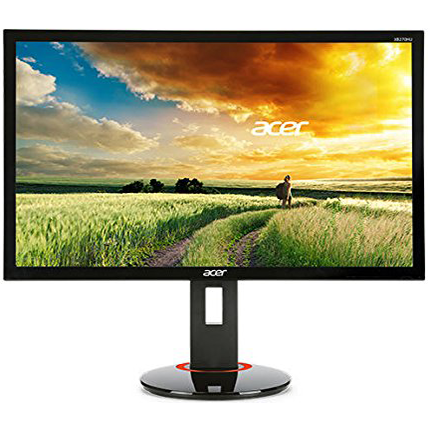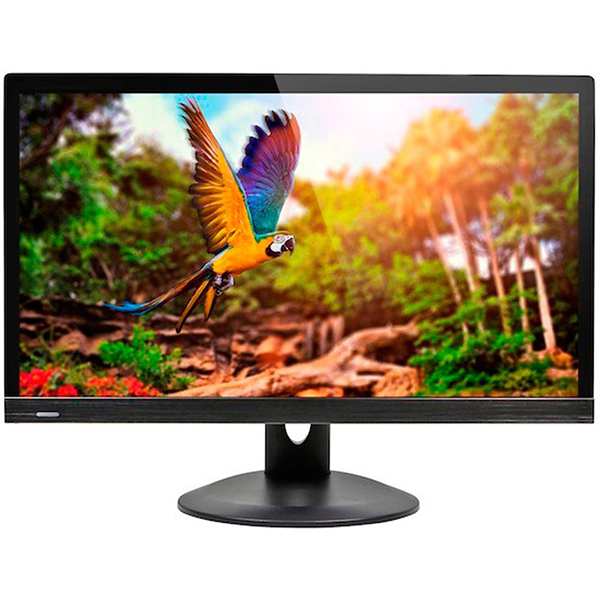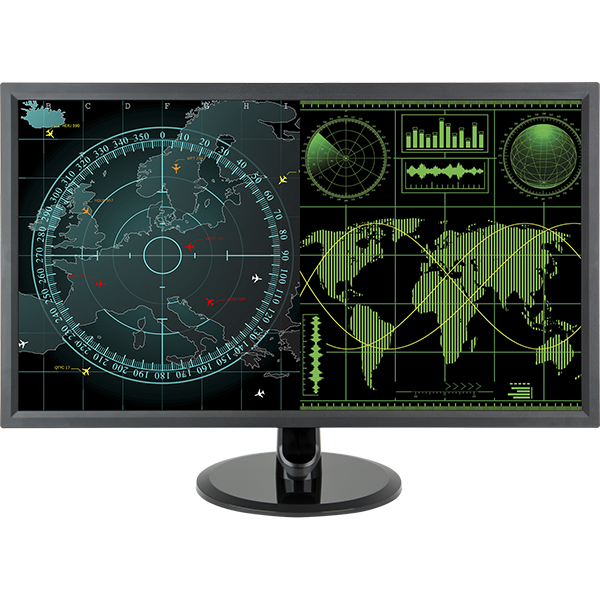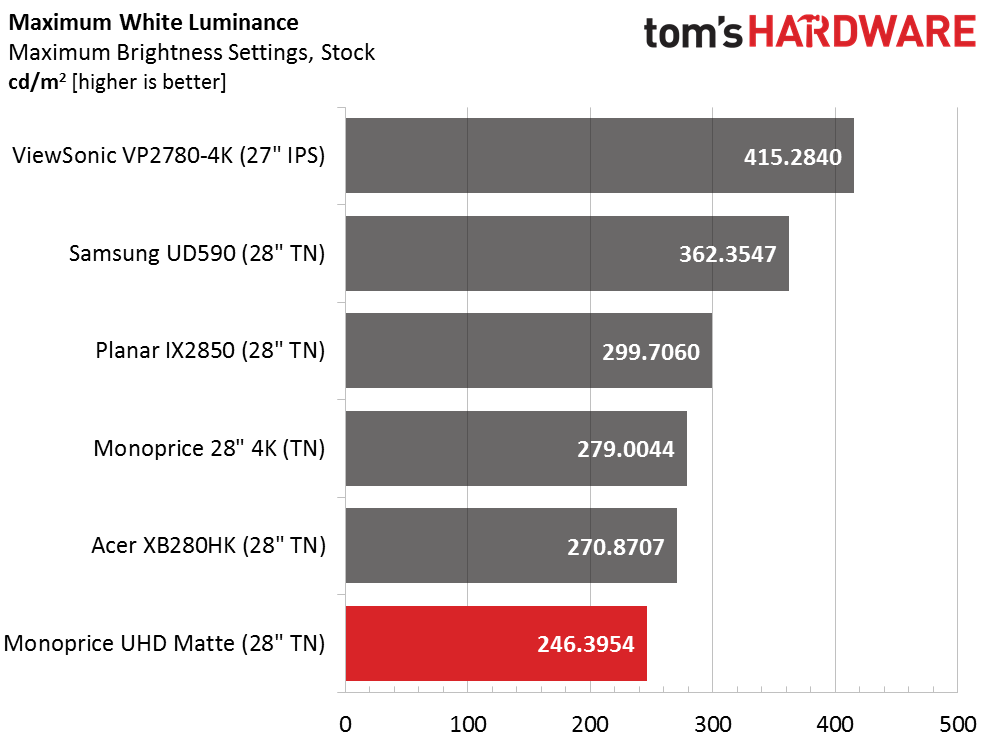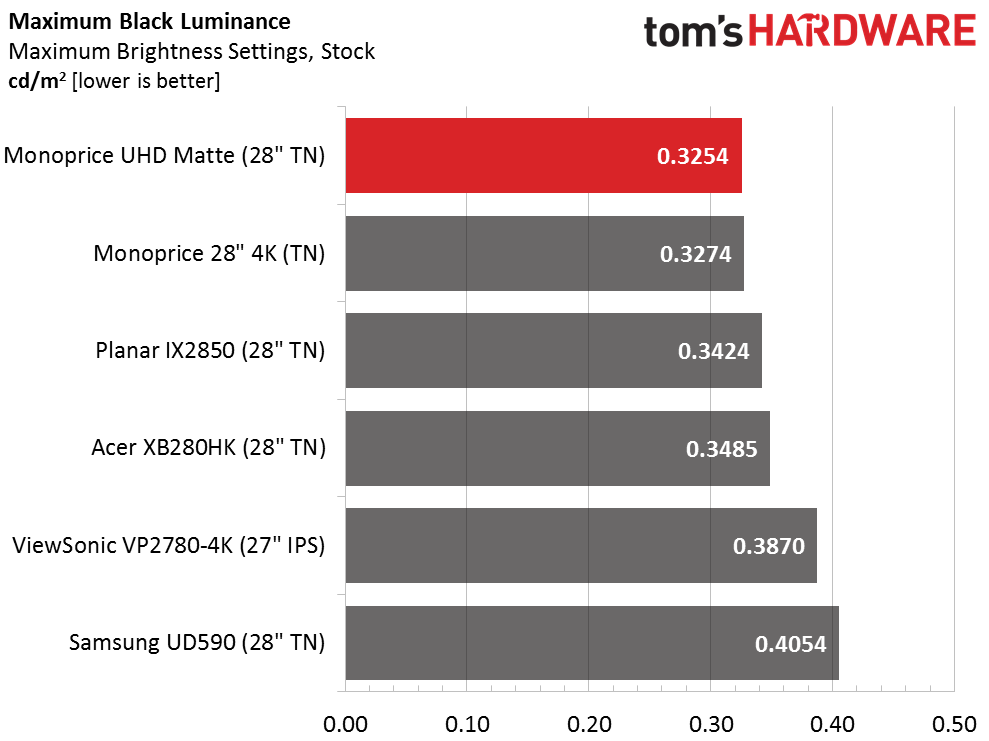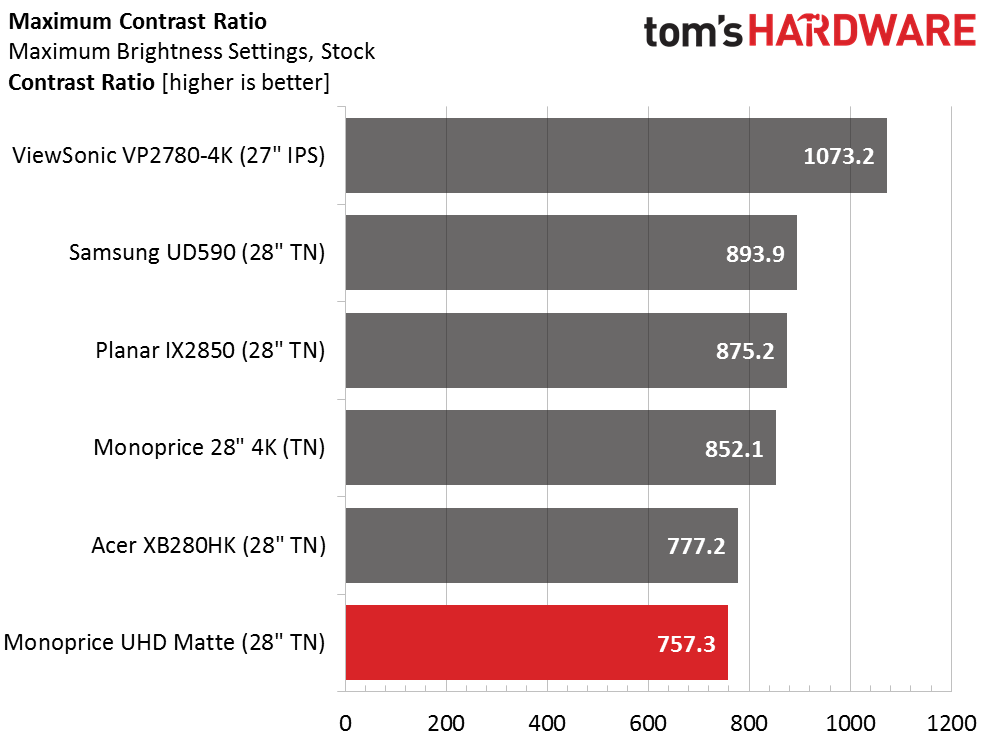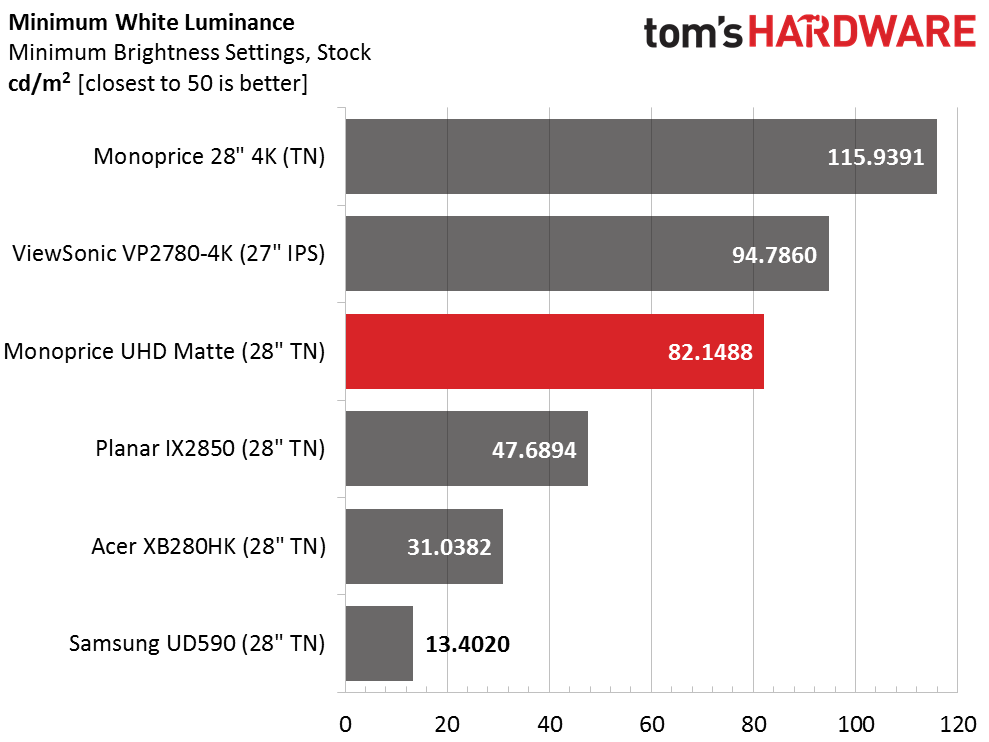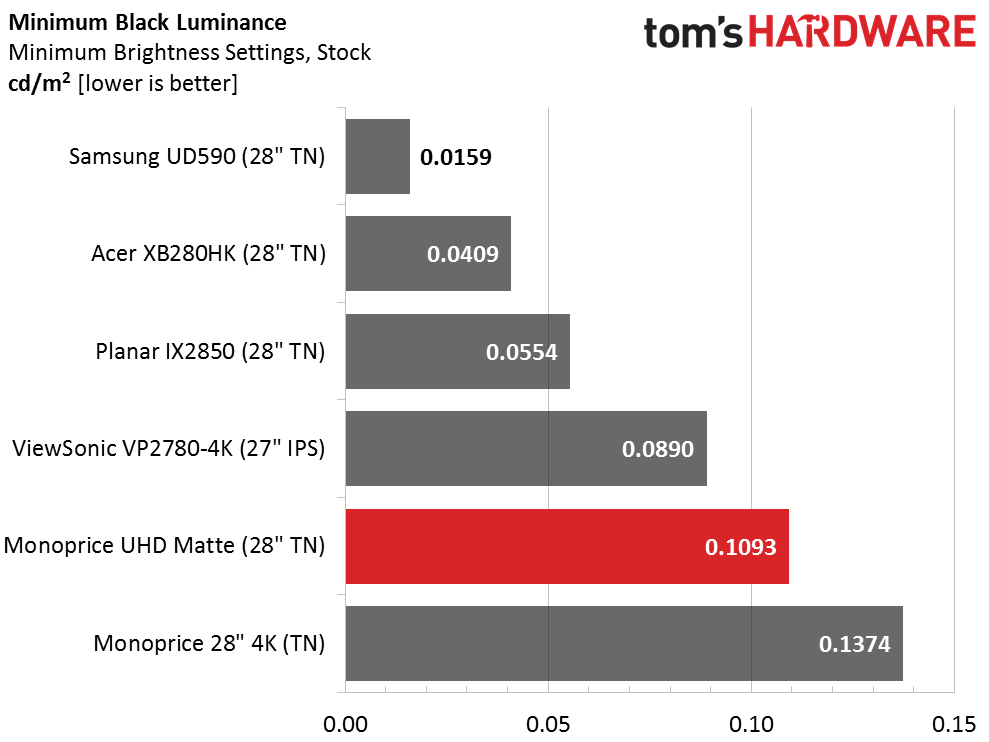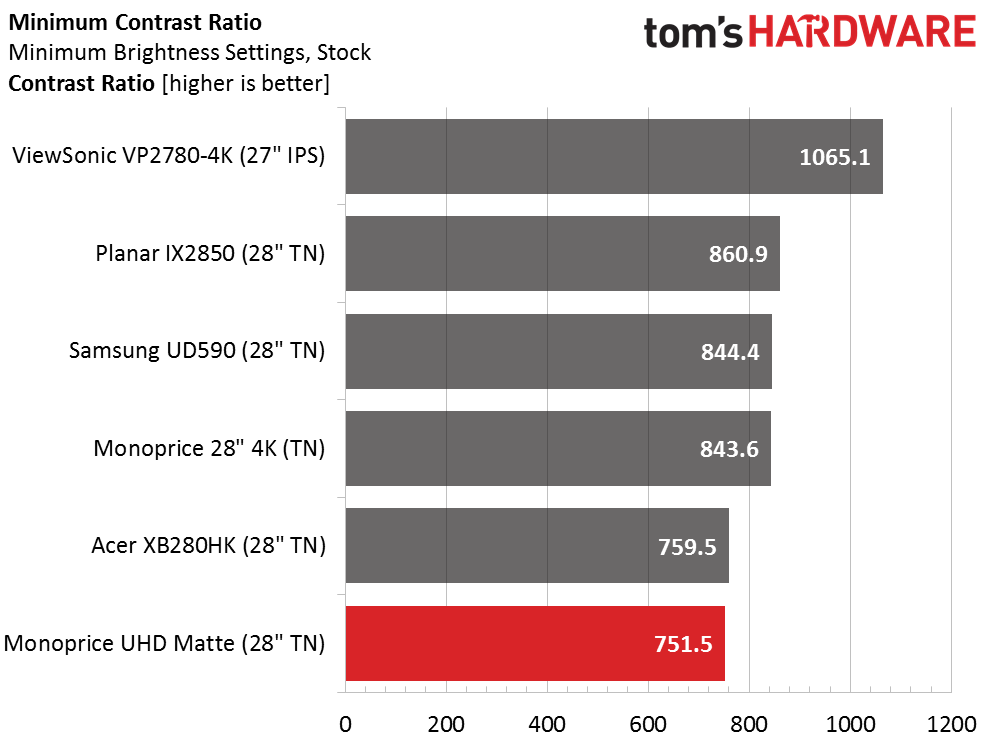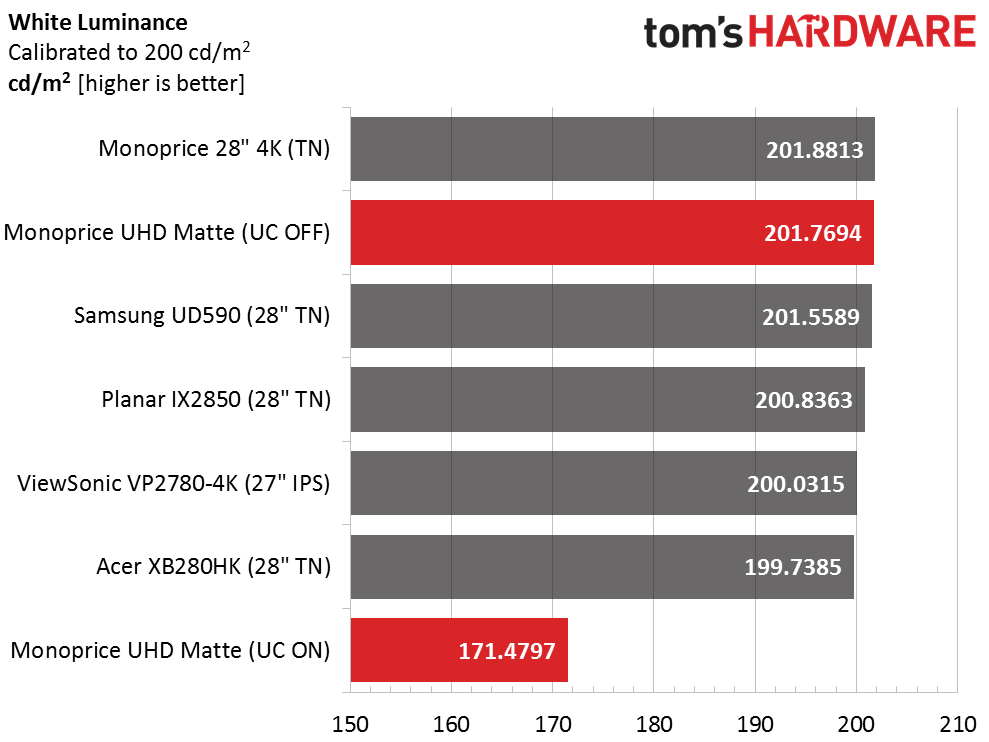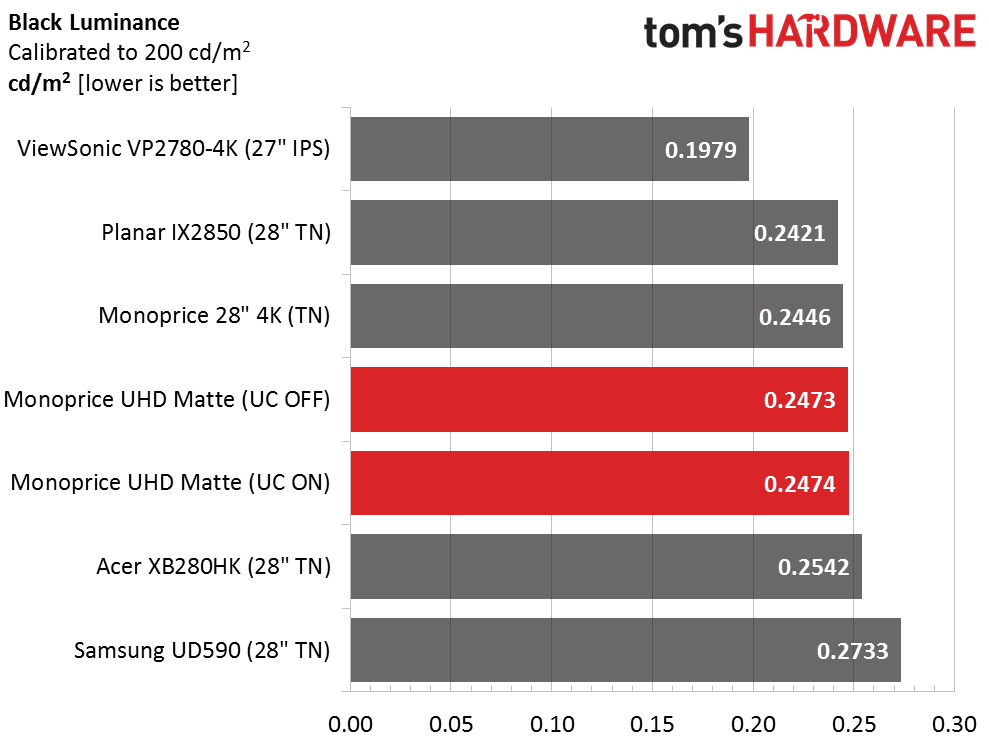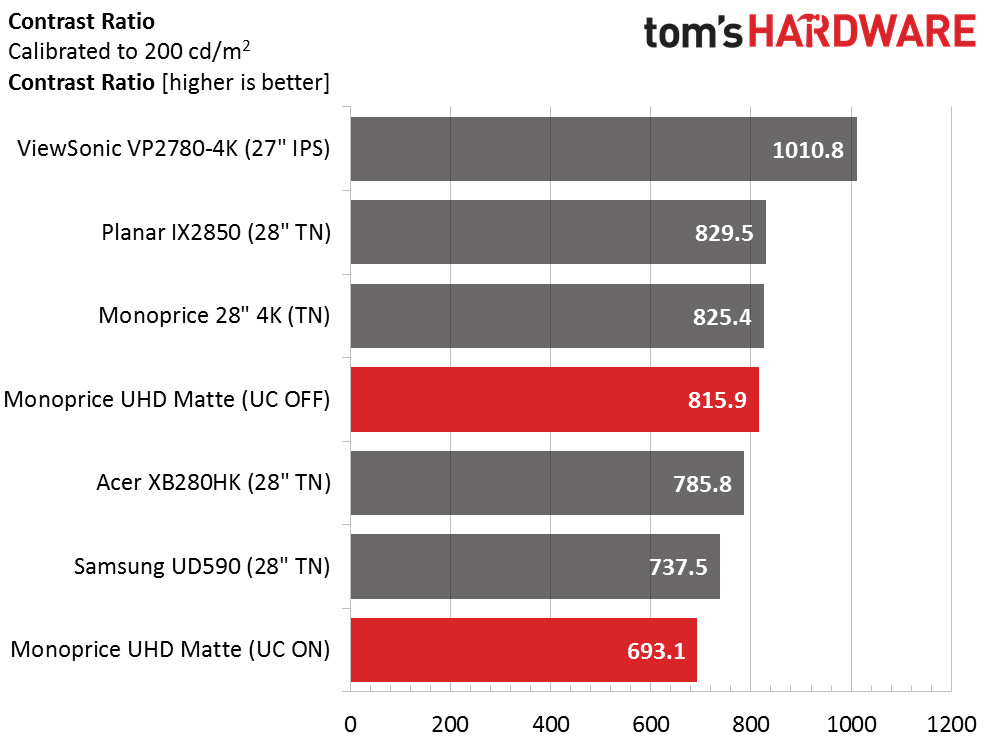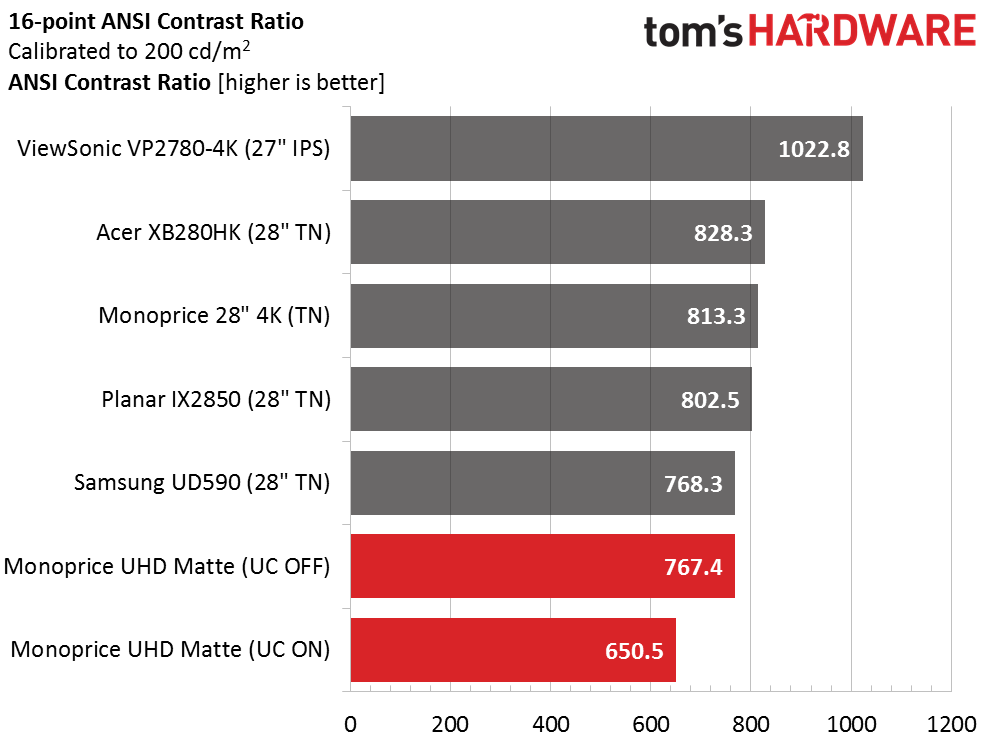Monoprice UHD Matte 28-inch Monitor Review
Monoprice's new 28-inch Ultra HD monitor features an anti-glare layer, which offers great viewing angles. But can the new UHD match the performance to the company's CrystalPro 4k display?
Why you can trust Tom's Hardware
Brightness & Contrast
To read about our monitor tests in-depth, please check out Display Testing Explained: How We Test Monitors and TVs.Brightness and Contrast testing is covered on page two.
After a rash of introductions last year, there haven't been too many new 28-inch Ultra HD displays to talk about. For our comparison group we've chosen two business-class screens that impressed us: Samsung's UD590 and Planar's IX2850. We also have Monoprice's other example, the CrystalPro 4K. Acer is represented by its G-Sync gaming monitor, the XB280HK. And finally we have a 27-inch IPS model from ViewSonic, the VP2780-4K. Monoprice undercuts the other brands by at least $100 at this writing with the UHD Matte selling for the least of all.
Uncalibrated – Maximum Backlight Level
Monoprice claims output of 300cd/m2 for the UHD Matte but we could only manage 246.3954 from our sample. This isn't a deal-breaker unless you need to use the monitor outdoors in bright sunlight. If you're wondering about the effects of Uniformity Compensation, we'll cover that in the calibrated output tests.
With the lowest output it stands to reason that the UHD Matte's black level would also be among the best. Unfortunately, this doesn't mean it has the highest contrast of the group but we found blacks to be visually on par with the competition.
The UHD Matte lags a bit behind its stablemate in the maximum contrast test. The IPS-based ViewSonic easily outpaces this field of TN panels so that's at least one reason to consider it over the lower-priced displays.
Uncalibrated – Minimum Backlight Level
Our preferred minimum backlight level is 50cd/m2 and the UHD Matte stops a little higher than that. 82.1488cd/m2 is a good setting for dark rooms however. If you experience eye fatigue at the zero brightness setting, a small lamp at your desk will close your pupils a little and balance things out.
The Samsung and Acer screens post impressive minimum black level numbers but their backlights are far too dim to be of practical use. Ultimately though, the Monoprice is still a bit lacking in contrast regardless of the output setting.
Get Tom's Hardware's best news and in-depth reviews, straight to your inbox.
The UHD Matte's minimum contrast is almost exactly the same as its maximum, which is a level of consistency we like to see. Of course more contrast would be better but at least image quality doesn't vary at different brightness points.
After Calibration to 200cd/m2
To show you the effects of the UHD Matte's Uniformity Compensation, we've included brightness and contrast results with the feature both on and off.
When the backlight is set for 200cd/m2 operation, the Uniformity Compensation reduces that output by only 15 percent. Many displays with this feature show a greater difference. So far, this is a good thing and the option is pretty much unheard of on a monitor in this price category.
Uni-comp has no effect on black levels whatsoever. The main question however is, does it improve panel uniformity? You'll find out on page seven.
The UHD Matte is a rare display in that its contrast actually improves noticeably after calibration. This is thanks to the fine resolution of the RGB sliders and the fact that they can be raised or lowered. The monitor is good without adjustment but we think a 7 percent increase is worth the effort. And it's one you can see in real-world content. Uniformity Compensation obviously lowers the number thanks to its reduction of the peak output level.
ANSI Contrast Ratio
ANSI contrast stays fairly close to the sequential number thanks to decent panel uniformity. Turning UC on drops the result by roughly the same amount. While this last-place finish may give one pause, it's important to remember that the UHD Matte undercuts the competition by around $150.
Current page: Brightness & Contrast
Prev Page OSD Setup & Calibration Next Page Grayscale Tracking & Gamma Response
Christian Eberle is a Contributing Editor for Tom's Hardware US. He's a veteran reviewer of A/V equipment, specializing in monitors. Christian began his obsession with tech when he built his first PC in 1991, a 286 running DOS 3.0 at a blazing 12MHz. In 2006, he undertook training from the Imaging Science Foundation in video calibration and testing and thus started a passion for precise imaging that persists to this day. He is also a professional musician with a degree from the New England Conservatory as a classical bassoonist which he used to good effect as a performer with the West Point Army Band from 1987 to 2013. He enjoys watching movies and listening to high-end audio in his custom-built home theater and can be seen riding trails near his home on a race-ready ICE VTX recumbent trike. Christian enjoys the endless summer in Florida where he lives with his wife and Chihuahua and plays with orchestras around the state.
-
jragonsoul Replyi wish the display was bigger, 40-50 inch, at 28 i find it useless.
Then you should get a television unless you want to pay 2000+ USD for the monitor. -
g-unit1111 What's the cost? For someone who is in the market for a new monitor this is an interesting option.Reply -
bit_user Reply
I don't know about 50" (unless you're sitting like 5 feet away), but 4k resolution at 28" seems a waste, to me. My 27" is 2560x1440 and I think I'd probably have to go up to at least 32" for my eyes to make out much more detail.17501375 said:i wish the display was bigger, 40-50 inch, at 28 i find it useless.
But I'm waiting for the next generation of GPUs, before I even start thinking about 4k monitors. Ideally, I'd wait until I can get a 14/16 nm GPU with HBM2 for <= $250.
-
Nintendork The monitor is pretty <removed>, when smartphone screens are reaching 2000:1 using the IPS panels with "quantum dot" you ask yourself why should you buy a crappy pc monitor.Reply
Watch the language. - G -
jragonsoul Reply
Honestly I think HBM2 is going to be reserved for higher tier GPUS (I HOPE I AM WRONG!) so I'm thinking bare minimum would be 300-350 for one. Would be glad to be proven wrong though.17503284 said:
I don't know about 50" (unless you're sitting like 5 feet away), but 4k resolution at 28" seems a waste, to me. My 27" is 2560x1440 and I think I'd probably have to go up to at least 32" for my eyes to make out much more detail.17501375 said:i wish the display was bigger, 40-50 inch, at 28 i find it useless.
But I'm waiting for the next generation of GPUs, before I even start thinking about 4k monitors. Ideally, I'd wait until I can get a 14/16 nm GPU with HBM2 for <= $250.
-
hannibal I also have 27" 2560x1440, and also think that the sweet spot for 4K is near 32". But hard to say without testing it personally.Reply
But in reality 4K needs G-sync or Freesync IMHO, because how much it needs horsepower to run in. Frame rates are not going to be great with these for many years.
-
sc14s ReplyThe monitor is pretty <removed>, when smartphone screens are reaching 2000:1 using the IPS panels with "quantum dot" you ask yourself why should you buy a crappy pc monitor.
You are comparing the monitor to something that probably costs somewhere around double if you are going high end phone (which you would have to have for high end screens). This isn't even mentioning the fact that you are getting a fraction of the viewing size on the phone. Apples to oranges really.
Watch the language. - G
